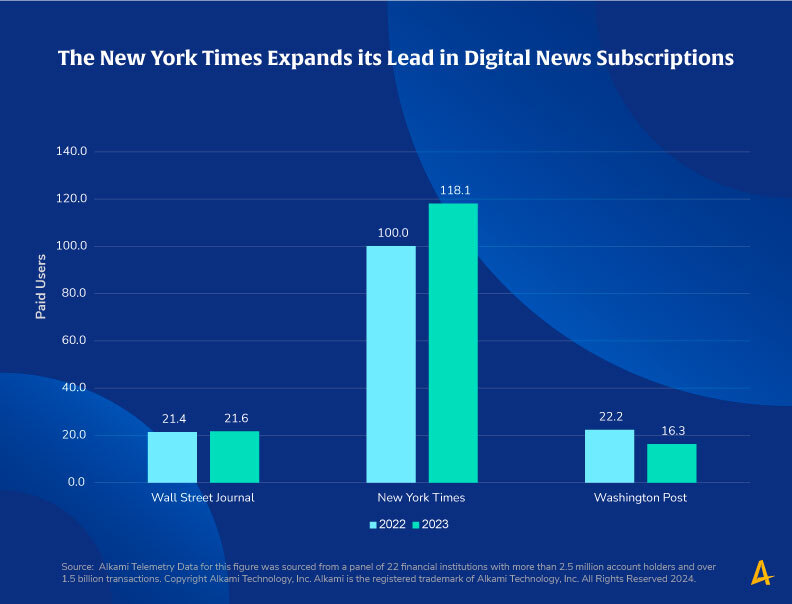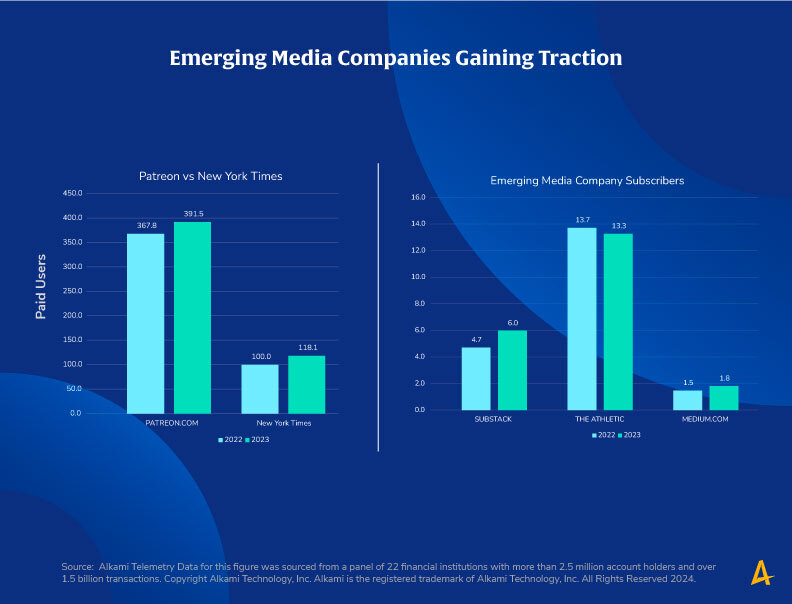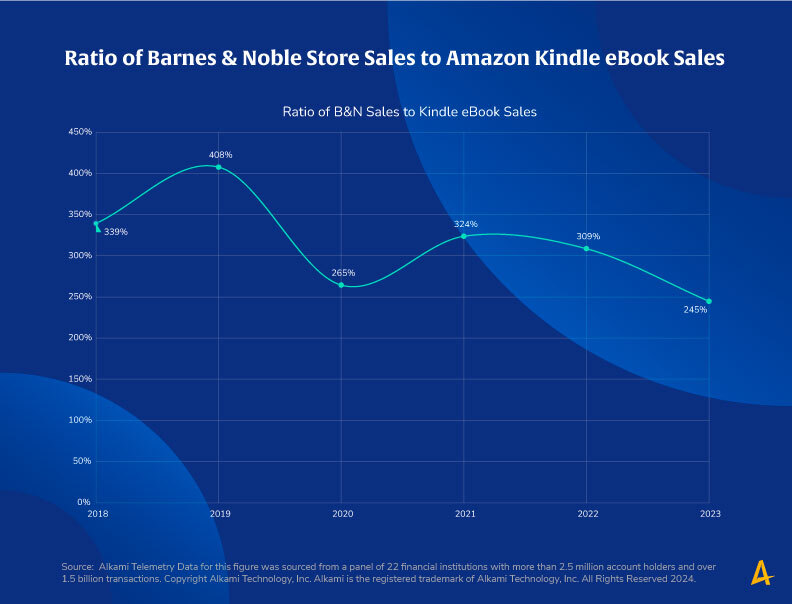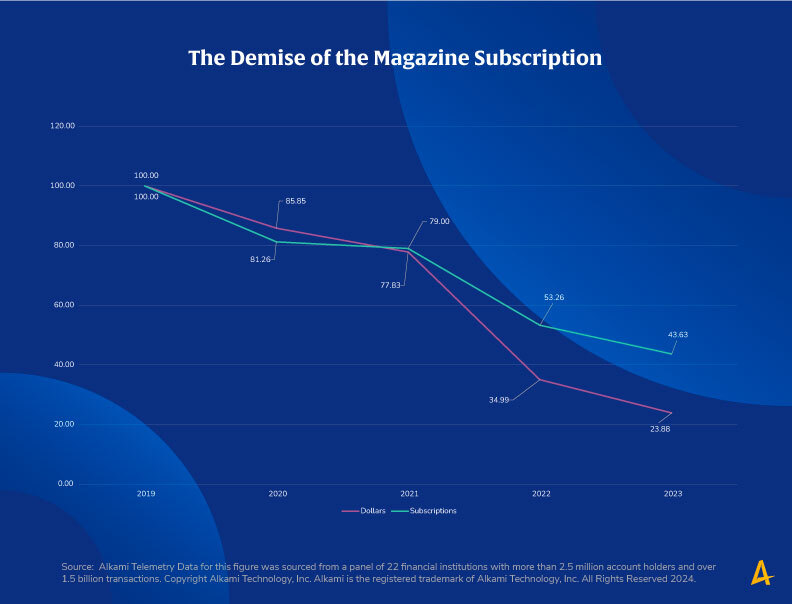Media consumption trends have varied over the years as interest in physical media and the advent of digital eBook and audiobook access have changed perspectives and utilization rates. Forty-two percent of Americans read at least one printed book in 2023, compared to just over 20 percent that opted for digital books. Yet, consumer reading trends as it relates to how consumers get their news or other reading, and the format they are consuming that content, still varies from the traditional ways, to online disruptors. Consider that the written word spans everything from periodicals to consumer-generated content online, transaction enrichment and the analysis of those insights is paving the way into consumer behaviors across digital media channels and brick-and-mortar book purchases.
With paywalls and recurring subscriptions creating traceable transaction behavior patterns, financial institutions have a lot to learn from consumer reading habits and consumption preferences. To shed light on this topic, Alkami Research analyzed consumer purchasing and recurring payment data around the publishing industry to explore how banks and credit unions can unlock new insights into their account holder base and drive strategic decision making.
When the internet was young, periodical publishers found syndicating their content online helped generate advertising revenue and increase readership. However, readers of printed publications were required to pay a subscription to access the content, and publishers soon learned that adding a paywall to their digital access was another avenue for revenue generation.
For example, Slate began charging for online content in 1998. In the decades since, more digital news websites have required subscriptions to gain full access to their content.
In analyzing consumer digital news subscription data, uncovered through transaction enrichment and analysis, Alkami Research found that legacy national newspaper brands are making waves in digital subscriptions. However, The New York Times is far and beyond the leader in the category, being five times more popular than The Wall Street Journal and The Washington Post. The New York Times grew its subscriptions by 18 percent year over year from 2022 to 2023 while the competition remained stagnant.

Since its inception, the internet has been a place for creators to share their ideas and works with one another. Beginning in 2007, YouTube and subsequent content creator platforms opened the door for content monetization, allowing creators to earn an income either from affiliated advertising or via a subscription model. Subscription models have skyrocketed in popularity in recent years with emerging media companies gaining significant traction.
Alkami Research took a closer look at some of the leading content creation platforms in this space including Patreon, Substack, and Medium. What quickly surfaced was the fact that these disruptive platforms outperform legacy periodical subscription models. For example, Patreon had 3.6 times more unique paying users than The New York Times and outpaced the competition among other emerging platforms. Even those on the rise, such as Substack and Medium, demonstrated greater growth, 20 percent and 27 percent respectively, than The New York Times.

While digitization has popularized newer forms of reading consumption including eBooks and audiobooks, physical books remain preferred among consumers. On a national scale, 45 percent of consumers purchase printed books compared to 23 percent that opt for eBooks.
Alkami’s Research shows this trend when evaluating the country’s largest physical bookstore chain, Barnes & Noble, against the leader in eBooks sales, Amazon Kindle. Interestingly, consumer spending habits varied between physical and digital purchasers. The average eBook consumer in 2023 placed 8.55 transactions and spent $9.64 per transaction. In contrast, the average physical book consumer purchased 2.61 times while spending $82.43 per year. Notably, 19.4 percent of consumers shopped with both vendors. A demographic of super readers consumed a mix of physical books and eBooks while spending 10 percent more on digital purchases and $134.93 on books in total across 2023.

While physical books continue to remain popular among consumers, the viability of physical magazines is drastically waning, and consumer transaction data paints a dire picture for magazines as a whole.
Alkami Research has demonstrated that the number of subscriptions and the dollars spent on magazines by consumers has declined significantly since 2019. In 2023, consumers spent 76 percent less on magazines than they did in 2019 with 56 fewer overall subscriptions across the same time period. This points to decreased demand as well as lowered costs as publishers combat subscriber losses.

A trend in recurring payment analysis, financial institutions should continue to explore ways to be top of mind with consumers so their payments for recurring subscriptions for online services, recurring subscription or eBook purchases are made with the institution’s credit or debit card. This can help lock in interchange income, as well as strengthen share of wallet. Spend patterns can aid in personalized banking through targeted campaigns aligning the marketing message showing the benefits of using their credit or debit cards for future recurring payments.
Additionally, it may be time for financial institutions to reevaluate where and how they are spending their marketing dollars. Magazines, long a stalwart of advertising plans, simply are not pulling the circulation and subscriber numbers of the past. Financial institutions could benefit by exploring alternate advertising outlets where their targeted consumer base is more likely to give them the impressions and brand recognition they covet. Banks and credit unions can also leverage their own transaction data analysis to better understand where account holders are spending their time and money to make the most of their marketing spend.
